IRA-approved silver products are those you can invest in an IRA. They must be produced by a national or approved private mint and contain at least 99.9% pure silver. Although silver can lessen your risk against economic instability, you must know that investing in it can be expensive and doesn't guarantee potential returns, especially when there's a bearish market.
However, if you consider yourself a novice investor or willingly want to add silver to your retirement portfolio, then you can go for it. I recommend investing in IRA-approved silver coins and bars like American Eagle silver bullion coins and Royal Canadian Mint silver bars since investors widely recognize them, making it easier for you to sell on the market.
In today's economic climate, many investors are beginning to seek alternative ways to protect their retirement funds from the eroding effects of inflation. If you're one of these concerned investors, consider investing in IRA-approved silver. Like gold, silver is a precious metal that has a rich history of being used as a store of value. Adding silver to your IRA can diversify your portfolio and lessen your risks whenever the stock market goes down.
In this post, we'll explore why investing in silver can be a game-changer for your retirement portfolio. We'll discuss what IRA-approved silver is, IRS purity standards and requirements, its types, pros and cons, IRA-approved silver coins and bars, and the steps to invest in silver. So get ready to learn the perks and strategies to help you make savvy decisions for your financial future.
What Is IRA-Approved Silver?
IRA-approved silver is a type of silver investment eligible to be stored in a gold, silver, or, in general, precious metal individual retirement account (IRA). This is why it’s called “IRA-approved,” like all IRA-approved investments, it’s up to the IRS to determine the conditions for a silver investment to be eligible. Any silver product that doesn’t meet the IRS’s requirements cannot be deposited in an IRA.
Silver Purity Standards And Requirements By The IRS
The IRS can consider a silver coin or bar IRA eligible when it has a purity standard of 99.9% or a minimum fineness of 0.999. It must also be produced by recognized government mints or a by a reputable private refiner. As for the coins, they must be declared as legal tender to prove their authenticity (American Silver Eagle Coin, for example) to be accepted by the IRS.
As mentioned above, not all precious metal goods are allowed to be stored in a silver or precious metal IRA. You should be cautious when contributing to an IRA because the depository will not accept non-approved metals.
The Amount Of IRA-Approved Silver You Can Invest
The IRS doesn’t directly limit the amount of silver you can invest in an IRA. However, there are net contribution limits on all IRAs. Your total silver IRA contributions must not exceed your limit each year.
The table below shows the contribution limits for traditional and Roth IRAs.
| Age Minimum | Contribution Limit | Eligibility | |
| Traditional gold IRA | No minimum | $6,500 (or $7,500 if you’re 50 or older) | As long as you have earned income. |
| Roth gold IRA | No minimum | $6,500 (or $7,500 if you’re 50 or older) | Income must be under $153,000 for individuals and $228,00 for married couples. |
It's important to remember that your IRA contributions may change over time, so it's a good idea to check the most recent contribution limits of the IRS. I suggest checking them on the official IRS website to ensure that the information is updated and accurate.
Types Of Silver IRAs
There are two ways to invest in silver in an IRA. You can invest in silver-backed assets, like silver stocks and other paper assets in a normal IRA, or you can invest in physical silver in a Silver IRA. In the latter case, you can shoes to invest either in a traditional silver IRA, or a silver Roth IRA. Since this post is about IRA-eligible silver, referring to the physical form of silver, let’s break the two latter types of silver IRA down:
Traditional Silver IRAs
These types of IRA accounts allow you to invest in physical silver using pre-tax dollars. This means you don’t pay income tax on the invested amount during that particular tax year, but you’ll pay income tax on your withdrawals once you retire.
In other words, you can benefit from tax-deductible contributions, and your investments grow tax-deferred until you start taking distributions out in retirement.
Silver Roth IRA
On the other hand, a silver Roth IRA is much like a normal Roth IRA account, only it allows you to invest in physical silver. With a silver Roth IRA, you purchase physical silver with after -tax dollars and store it at a third-party facility through a reputable silver IRA custodian.
Since you’re contributing to this account using after-tax dollars, your contributions aren't tax deductible. However, the advantage is that your withdrawals when you turn 59 ½ are tax-free. So if you expect to earn a higher income close to retirement, choosing this account is a smart financial move.
Pros Of Investing In An IRA-Approved Silver
#1 Diversification
Buying physical silver can help diversify your retirement portfolio. This is because precious metals like silver have low correlations to traditional assets like stocks and bonds. So if the market is down, the value of silver won't fluctuate the same way these equities do. Thus, diversifying your retirement funds with IRA-approved silver can reduce your overall risk in the market.
#2 Tangible Asset
Silver is a tangible asset that you can actually hold and possess, unlike stocks and bonds. This gives you a sense of reassurance and ownership, knowing you have something to hold on to when your paper assets aren't doing well in your portfolio.
#3 Hedge Against Inflation
Similar to gold, silver is used as a store of value, so when the purchasing power of the U.S. currency goes down, you can use silver as a hedge against the effects of inflation. The price of precious metals like silver in times of a bearish market might decrease, but in the long run it tends to go up.
#4 A Potential For Price Appreciation
Investing in silver can help maximize the growth of your retirement portfolio since, as we pointed out before, its price increases over time the longer you hold it. Silver may not be as valuable as gold, but it’s used for many industrial purposes, such as electronic devices. So if there's a higher demand for tablets or smartphones, the demand for silver may go up as well.
Cons Of Investing In An IRA-Approved Silver
#1 Storage And Security
Unlike mutual funds or ETFs, you need adequate storage and security for your ira-eligible silver investments. Since they're physical assets, they must be stored in an IRS-approved depository or a safe deposit box, and this isn’t free. It costs around $100 to $150 annually, depending on your custodian.
#2 Volatility
The price of silver isn’t constant. It can be even more volatile than gold because it's cheaper and has a smaller market than gold. So investing in this precious metal can give you more risk and uncertainty because its price is less predictable.
#3 Liquidity Challenges
Unlike the stock market, the market for IRA silver coins and IRA-approved silver bars isn’t very big, so it’s not easy to sell your physical silver whenever you want. It can also be challenging to find an ideal buyer for your metals to sell them at a fair price. Thus, this isn’t an asset you usually keep for emergencies because of lower liquidity.
#4 Limited Income Generation
Contrary to some stocks and bonds, investing in precious metals doesn’t generate dividends of any kind. You can only profit from price appreciation. If you're looking for an investment offering dividends or another steady source of income, you’ll have to choose another asset class.
That said, if you’re still set on investing in silver but want to earn income, you could go for paper silver assets like stocks of silver mining or refining companies whose share price is linked to the price of silver.
Best IRA-Approved Silver Coins And Bars
Not all IRA-approved silver investments are equal. Some are more valuable than others. That's why I've listed some local and international IRA-approved silver coins and bars that are great additions to your silver IRA.
List Of The Best IRA-Approved Silver Coins
#1 American Eagle Silver Bullion Coins
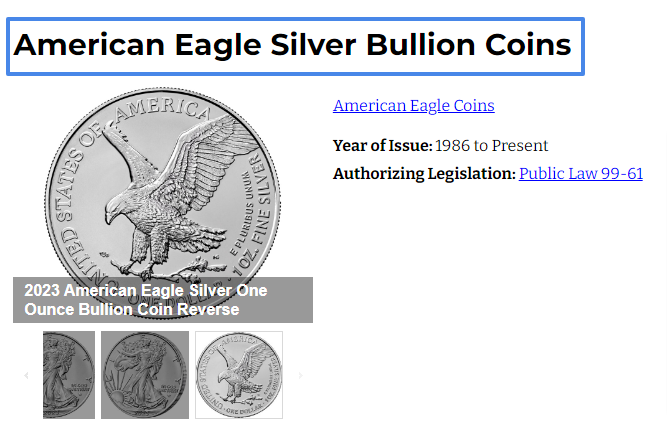
This silver coin is minted by the United States Mint, and it features a full-length figure of Liberty holding an oak branch, and the reverse shows an eagle coming in for a landing, carrying an oak branch as if to add it to a nest. It contains one troy ounce of 99.9% pure silver and comes in common sizes like ⅒ oz, ¼ oz, ½ oz, and 1 oz.
These coins are considered a good silver investment since they're widely recognized for their historical features. You can also trade them more quickly than other silver coins since they're popular among collectors, which increases their liquidity.
#2 American Eagle Silver Proof Coins
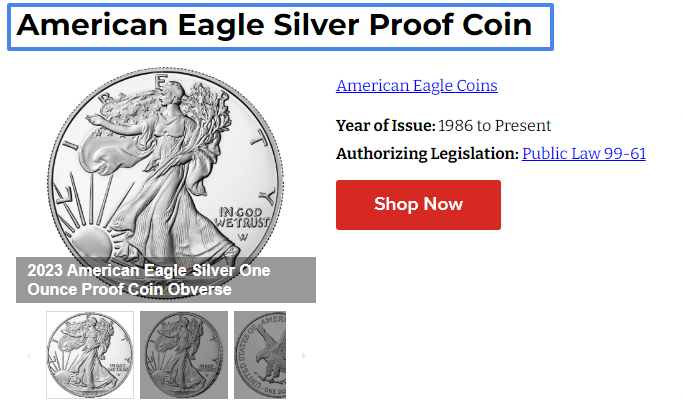
This coin is a collectible version of the American Eagle Silver Coin, which the U.S. Mint produces at West Point.
The difference between these coins and the first ones we mentioned is that they're struck with a unique proofing process, making them appear more highly detailed than the former.
This coin may appeal to you if you're a coin enthusiast and want to hold onto it for the long term since its value would appreciate over time.
#3 Canadian Silver Maple Leaf Coins
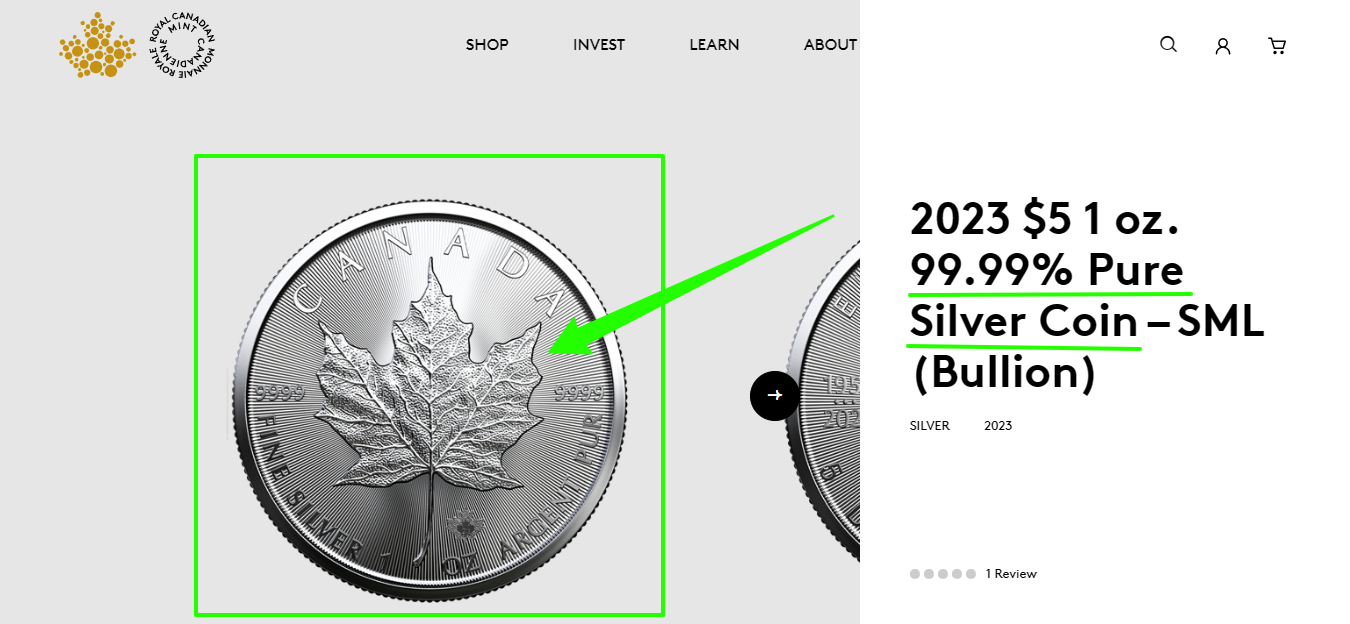
This Canadian coin is produced by the Royal Canadian Mint. It features the iconic sugar maple leaf design and contains either 1 oz or 10 oz of 99.99% pure silver. Investing in this coin would make buying and selling easier because they have a trusted reputation globally. There's also less risk of purchasing fake coins since you can check their authenticity by looking for the radial lines that are difficult to counterfeit.
#4 Australian Kookaburra Silver Coins
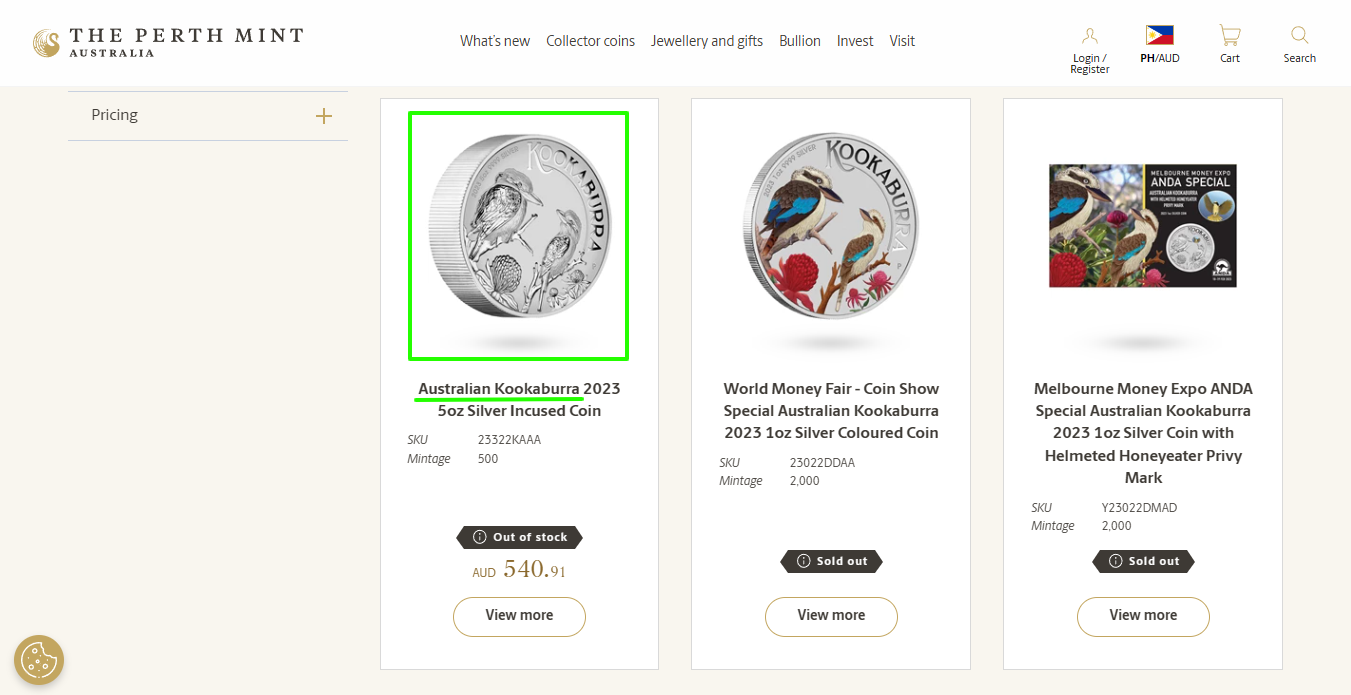
This coin is produced by the Perth Mint in Australia, where it features an iconic design of the native Australian bird, the Kookaburra. These coins are made of 99.99% pure silver and come in 1 oz, 2oz, 10 oz, and 1kg sizes.
It has a higher collectible value than other silver coins because this coin is considered legal tender in Australia. Also, the Perth Mint offers different designs every year, making it exciting to collect if you're a coin collector.
#5 Austrian Silver Philharmonic Coins
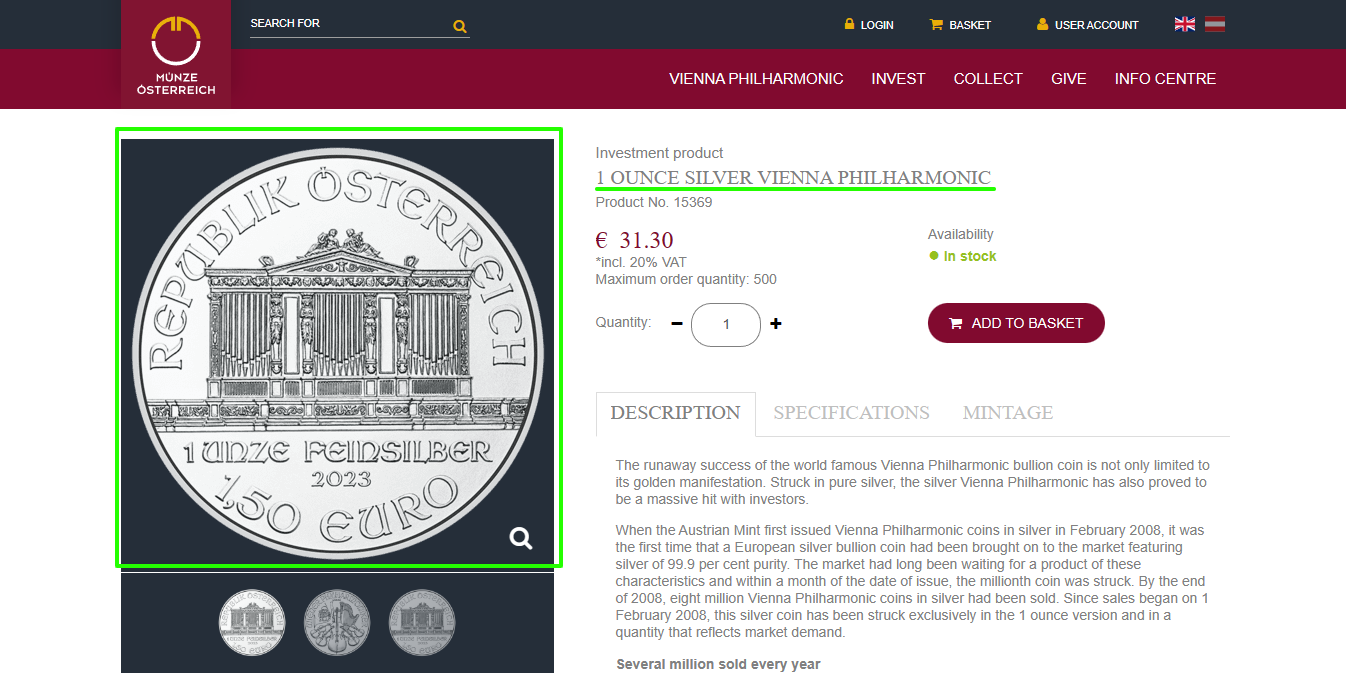
This coin is produced by the Austrian Mint or Münze Österreich and only comes in a 1 oz presentation. It features iconic designs of the Vienna Philharmonic Orchestra, including musical instruments of violin, harp, cello, French horn, and bassoon. It has a face value of €1.50 and contains 99.9% fine silver.
These coins are a great silver investment because they're legal tender backed by the Austrian Mint. If you're also going to buy one, they're distributed in beautiful mint cases filled with 500 coins in 25 plastic tubes.
Take note that you can partly reduce your overall cost when buying these coins since it has lower VAT when purchased from some European countries like Switzerland, for example.
#6 Mexican Silver Libertad Coins
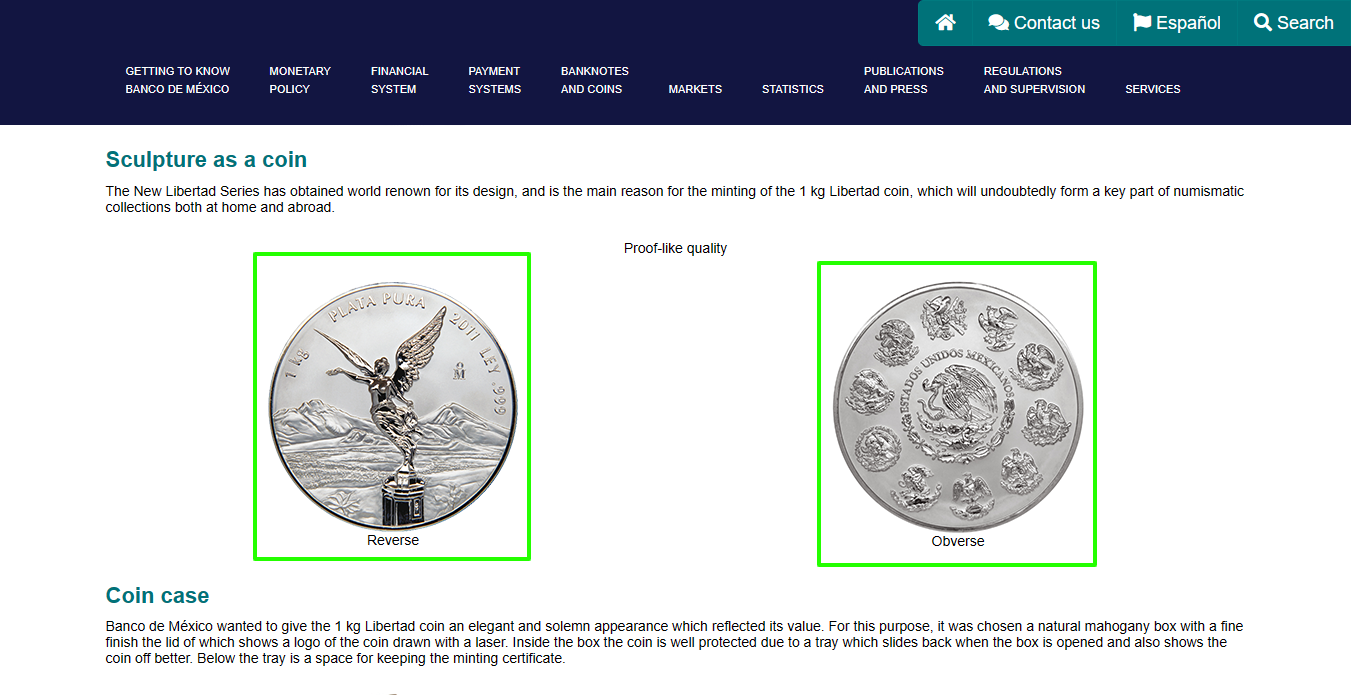
One of the last coins on this list is the Mexican Silver Libertad Coin, which comes in common sizes like 1/10 oz, 1/20 oz, 1/4 oz, 1/2 oz, 2 oz, 5 oz, and 1kg. It's produced by the Mexican Mint, which features its symbolic Angel of Independence and the historical version of the Mexican coat of arms and contains 99.9% pure silver.
Having this coin in your retirement portfolio can be a wise decision if you're after limited-mintage coins with stunning designs.
List Of The Best IRA-Approved Silver Bars
Like gold bars, silver bars are rectangular in shape, and they’re made of pure silver. You can usually choose from various sizes, like 1 oz, 5 oz, 10 oz, to 100 oz, depending on your budget or retirement goals. But some mints also make other standard sizes like ½ oz, 2 oz, 50 oz, and 1,000 oz. Here’s a list of the best IRA-approved silver bars.
#1 Royal Canadian Mint Silver Bars
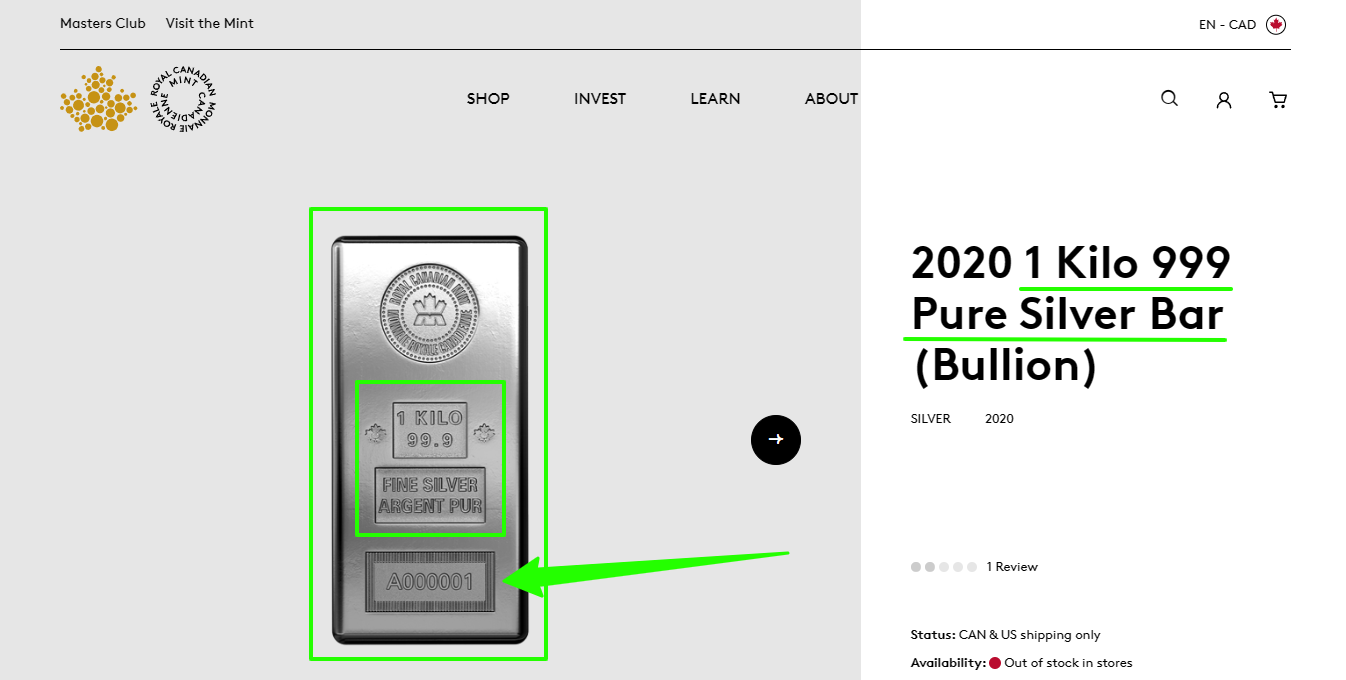
These Canadian silver bars are produced by the Royal Canadian Mint in 10 oz, 100 oz, and 1kg presentations. They feature the mint’s maple leaf logo, purity, and serial number on its surface and contain 99.99% pure silver.
These silver bars may be cost-effective since they also carry lower premiums than others. Not only that, its purity level of 99.99% is exceptionally high, which means that it's more valuable and desirable than other bars made of 99.9% fine silver.
#2 Johnson Matthey Silver Bars
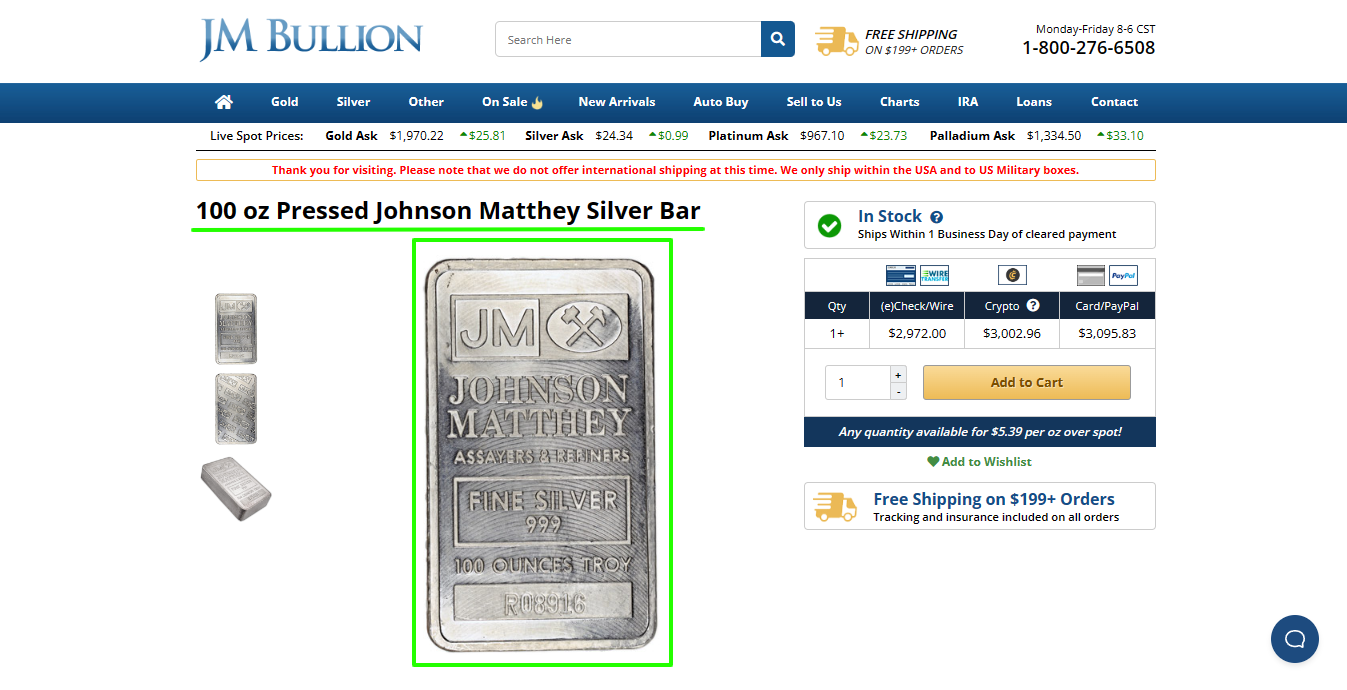
These silver bars are produced by a reputable precious metals refiner, Johnson Matthey, and are made of 99.9% fine silver in 1 oz, 10 oz, and 100 oz presentations.
They're considered a great silver investment, and you can add them to your retirement portfolio since they're usually IRA-eligible. They’re also slightly cheaper than other bars since this refiner usually charges lower premiums.
#2 Sunshine Mint Silver Bars
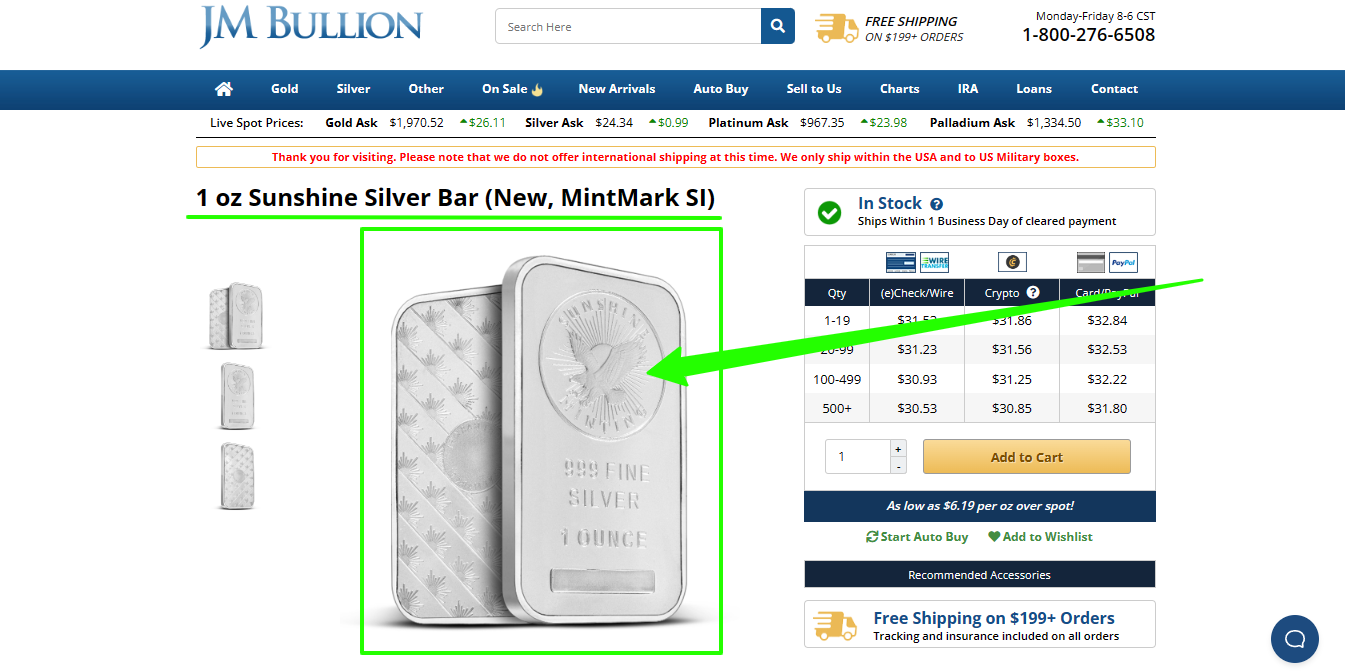
These silver bars are produced by a private mint called Sunshine Minting, Inc. It features its iconic eagle trademark with an engraved weight and purity (99.9% pure silver) on the opposite side. These bars come in common sizes like 1 oz, 5 oz, 10 oz, 100 oz, and 1 kg.
What's great about these silver bars is that it has Mintmark SI technology to reduce their risk of being counterfeited. Similar to Johnson Matthew silver bars, they have lower premiums which can be a cost-effective choice for you.
Although these silver bars are frequently included in IRAs, it's crucial to remember that their eligibility might vary based on the product, purity, and rules of your chosen IRA custodian. Therefore, you should talk with your IRA custodian before making any investments to ensure that your silver purchases fit the standards.
How To Buy Silver Bars Or Coins In An IRA
Many investors want to diversify their portfolios with precious metals to protect their savings from volatility and inflation. To start investing in IRA-approved silver, you can follow these simple steps below:
#1 Educate Yourself On The Precious Metals Market
Like any other investment, you need to take some time to learn about how to invest in precious metals like silver. You must learn about IRS regulations and recognize the specific requirements (like purity standards) for silver coins or bars to be accepted in an IRA.
This way, you'll always know what you’re investing your money into, you can have clear and accurate expectations about your investment’s yield over time, and you’ll be able to avoid any potential tax penalties from not following the rules and regulations to the letter.
#2 Find A Reputable IRA Custodian
Once you're ready to start investing, you must find a reputable precious metal IRA custodian that allows you to invest in physical silver. You must pick out one with a solid reputation and experience in trading precious metals and transparency when it comes to its fees.
If you don't know which IRA custodians to should look out for, you can check out our post on the best gold IRA companies. The companies featured on that list all offer silver IRA investing.
One of the best companies I recommend the most is Augusta Precious Metals. It has an A+ rating on the Better Business Bureau (BBB) and works with Equity Trust Company as its IRA custodian. So, be sure to check it out and see if it’s what you’re looking for.
#3 Open A Silver Or Precious Metal IRA
After choosing your custodian, you need to open an IRA with it. You can go through its website or contact its support team to assist you in creating an account. Most silver IRA companies offer free informational guides to give you basic knowledge on precious metals and how to open and set up your account.
#4 Fund Your New Silver IRA
Once your account is created, you can begin funding your account. There are several ways to do so. You can fund it directly with your earned income as long as you haven’t maxed out your IRA or Roth IRA contribution limits. Alternatively, you roll over existing funds you’ve saved in your normal retirement fund.
In the latter case, you can transfer your existing funds to your new account by doing a direct or indirect rollover. Of the two, I suggest you do a direct rollover since it comes with less risk of paying potential taxes than doing an indirect rollover.
#5 Purchase Your Silver Coins Or Bars
After waiting for the rollover to be completed (usually 2 to 4 weeks), you can purchase any silver products you want as long as they’re approved by the IRS. Choose whether you want to spend your retirement funds on silver coins or bars, and choose the right size based on your budget and long-term goals.
Take note that smaller coins and bars of 1 oz or less are usually easier to sell (more liquid) than larger coins weighing 10 oz or more. If you're having difficulty choosing which one, you can reach out to your custodian's representative, and they'll be glad to help you pick the right one for your portfolio.
#6 Arrange For Storage
After buying your IRA-approved silver, it's time to store your precious metals to protect them from damage and theft. Your custodian might offer you several storage options in one or more IRS-approved depositories. For example, in some cases, you can choose between storing your silver in a segregated deposit box or a non-segregated one.
Throughout the process, your custodian will assist you in arranging secure storage as well as transport from the seller to the depository’s storage facility.
A Summary Of IRA-Approved Silver
IRA-approved silver is a type of coin or bar that meets the purity standard or minimum fineness of the IRS to be eligible for a silver IRA. In most cases, this purity must be at least 99.99% pure silver, but in the case of official government mints that produce silver coins considered legal tender, coins, and bars can be just 99.9% pure.
There are 2 types of silver IRAs, traditional and Roth silver IRAs, which let you invest in physical silver. If you want to diversify your portfolio with it, you should open an account with an IRA custodian and let them help you throughout the entire process of purchasing and storing your metals.
The best IRA-approved silver coins are the American Silver Eagle Bullion and Proog coins. In the case of IRA-approved silver bars, the best is the Royal Canadian Mint Silver Bar. All of these silver investments are widely recognized and enjoy greater liquidity as they’re produced by reputable manufacturers.
Although silver may act as a hedge against inflation, always keep in mind that all investments involve risk and that the price of silver may change over time, possibly decreasing. So before making any investment decisions, you need to do your research, know your retirement goals, and evaluate your risk tolerance beforehand.
IRA-Approved Silver FAQs
Is silver allowed in an IRA?
Yes, silver is allowed in an IRA. These assets are allowed as long as it meets the specific requirements of the IRS, having at least 99.9% purity or 0.999% minimum fineness in the case of legal tender coins produced by government mints and 99.99% purity or 0.9999 fineness in all other cases.
How do I buy silver bars in an IRA?
You can buy silver bars in an IRA by first choosing an IRA custodian that allows you to invest in physical silver. Then you deposit money into your new account or rollover funds from your retirement savings so that you can fund your new IRA. Once funded, you can purchase any amount of silver bars of your choice.
Is buying silver reported to the IRS?
Yes, buying silver is reported to the IRS. According to IRS Publications 1544, the precious metals custodian must submit Form 8300 if you bought silver for more than $10,000 in a single transaction. Also, this form must be filed after the 15th day the transaction has occurred to avoid penalties.
How can I avoid paying taxes in silver?
You can avoid paying taxes in silver if you reside in one of the 42 states (including Arizona, Delaware, New Hampshire, Ohio, South Carolina, and Texas) where you don’t pay sales tax. You can also defer income tax by investing in a traditional silver IRA since those investments are paid with pre-tax dollars and are tax deductible. Other than that, you can also help lessen your capital gains tax by holding your silver for at least 1 year.
How much tax will I pay for selling silver?
The amount of tax you'll pay for selling silver is a capital gains tax rate of 28%. They're considered collectibles by the IRS, so you must pay taxes whenever you sell silver. Also, it's crucial to speak with a skilled tax expert or accountant so they can assist you in navigating the reporting and payment of taxes on the sale of silver and understanding the tax consequences.


